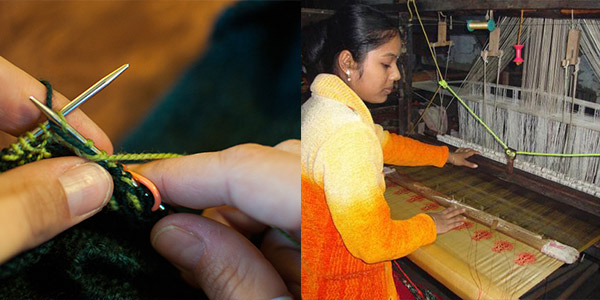ITI in Weaving of Silk and Woolen Fabrics
Weaving of Skill & Woollen Fabrics is a craft instructing vocational trade. The duration is one year with two semesters of six months each. There are many topics comprises in trade such as familiarization with weaving machines, their uses, safety precautions to be observed while attending the operation on each machine; raw silk testing and quality control; grading of wool with official standards, fineness, length, evaluation of shrinkage, felting of wool; woollen and Worsted and the like so many others. Trade is career orienting in nature that opens many jobs and is an important one from point of view as self-employment. There are many ITIs in the country offering this trade.
Skills Required
- Students should have skills like good personality, presentation, communication skills, thinking focus and analytical abilities.
- They should be good hard worker, team player, responsibility and have maturity level, ambition and career orientation, commitment to job, integrity and loyalty.
- Candidates who want to run their own private small scale weaving business also are good suit for trade as it enhances their skills.
Syllabus
1st Sem
- Familiarization with weaving machines, their uses, safety precautions to be observed while attending the operation on each machine.
- Identification of different types of fibres and their collections.
- Identification of different types of silk and wool materials and their collections.
- Identification of different types of yarn and formation of knots.
- Methods of finding out counts of heald and reed.
- Different parts of handlooms, parts of pit loom and frame loom. Practice on the looms.
- Different parts of throw shuttle and fly shuttle looms and frame loom. Practice on the frame looms.
- Familiarization with different parts of slay and their uses.
- Familiarization with different types of shuttles, parts and uses.
- Preparation and practice of bobbin and cones, practice of preparing good packages, Practice of knotting broken ends.
- Preparation and practice of creeling and warping, beaming.
- Preparation and practice of drafting, denting and gaiting up of looms.
- Practice on size mixing.
- Practice on sizing by hands.
- Different parts of primary motion and secondary motion of the looms and practice.
- Preparation of different designs for silk and woollen fabrics.
- Finding out defects in fabrics and Understanding remedial measures.
- Familiarization with warp reed, yarn assorting balance, yarn and cloth quadrants.
- Familiarization with single yarn tester and practice.
- Analysis of silk and woollen fabrics.
- Degumming of silk and Dyeing.
- Finishing and dyeing of woollen fabrics.
- Printing of Woollen fabrics.
- Project work.
2nd Sem
- Understanding simple design like plain weave, twill & satin with their draft & peg plan.
- Preparation of different designs on graph papers.
- Calculation regarding silk and woollen yarns.
- Calculation and conversion of different yarns.
- Familiarization with finishing methods.
- Familiarization with different parts of power loom.
- Familiarization with special features of power loom and tuning of loom for Woollen fabrics.
- Familiarization with different parts of weft fork motion and seven weave take up motion.
- Familiarization with different types of dobbies and preparation of dobby chain
- Familiarization with the jacquard and its working.
- Preparation of jacquard design on graph papers and harness mounting.
- Preparation of design on graph papers using satin weaves.
- Preparation of design on graph papers using different weaves such as broken corkscrew and combine twill. Production and efficiency calculation of machine. Familiarization of shuttle less looms and different types of weft insertion system.
- Familiarization with the analysis of woollen fabrics.
- Practice on finishing of silk.
- Practice on finishing of woollen fabrics.
- Familiarization with hand milling and calendaring.
Eligibility & Admissions
Students should be passed in 8th class examination from a recognised school board in the country.
Job Prospects
- After passing trade, they can go for further higher studies like Diploma/Bachelor Degree course as it improves their ranks and educational qualification.
- Trade is good and beneficial in case they have family weaving either small scale or big scale.
- They can apply for government jobs as well which are published by respective department time to time in Gazette/Employment News in the country.
Weaving of Skill & Woollen Fabrics Trade Job Types
- Yarn Dyeing In-charge.
- Assist. Weaving Supervisor.
- Textile Consultant.
- Woven Designer.
- Part Time Instructor.
 Courses and Colleges after 10th After 10th, What Next?
Courses and Colleges after 10th After 10th, What Next?








